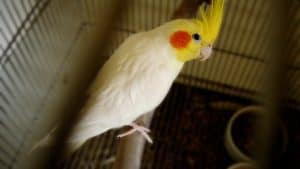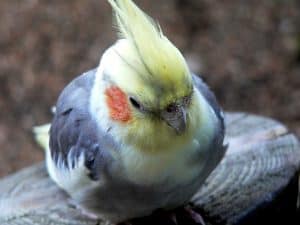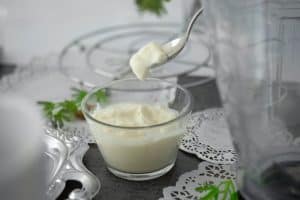Imagine you’re scanning the shelves at your local pet store, looking for the best food options for your feathered or furry friend. You’ve likely come across bags labeled “pelleted diet” and wondered, what is the pelleted diet exactly? This type of food is more than just compacted grains; it’s a scientifically crafted meal designed to meet all of your pet’s nutritional needs in a simple, manageable form.
Switching to a pelleted diet can revolutionize the way you feed your pets, ensuring they get a balanced intake of nutrients with every bite. This is crucial for maintaining their health and vitality, especially for species with specific dietary requirements. Let’s dive into the benefits and considerations of this feeding strategy to see if it’s the right choice for your beloved animal companion.
Understanding Pelleted Diets

Pelleted diets represent a compact, nutritionally-balanced option for feeding pets, especially birds. These diets are engineered to deliver every essential nutrient in a consistent and digestible form.
Definition and Types
A pelleted diet is a form of feed that’s compressed into small, uniform pellets. Each pellet contains a carefully balanced mixture of proteins, fats, vitamins, and minerals that are vital for the health of pets.
For birds, pellet diets range from those formulated for small species like budgies to larger parrots, each tailored to match the dietary needs of the species. Manufacturers often categorize these diets into maintenance pellets, suitable for most of the year, and breeding pellets, which contain higher nutrient levels needed during reproductive periods.
Components and Ingredients
The primary components of pelleted diets include proteins, typically sourced from soy, corn, or legumes; fats from vegetable oils; and carbohydrates from grains. Vitamins and minerals are added in precise amounts to support health and vitality. Unlike seed mixes, pellet diets avoid the risk of selective feeding where birds might pick out only their favorite seeds, potentially leading to nutritional imbalances.
Moreover, high-quality pellets eliminate the need for food additives, utilizing natural ingredients and avoiding artificial colors and preservatives, ensuring a healthier bird’s diet for pet birds. Each pellet is crafted to provide a complete meal, meeting the nutritional needs outlined by veterinary nutritionists.
- PREMIUM BLEND of seeds and Natural FruitBlend Pellets to provide your bird a sensible way to indulge in a seed mix.
- Made specifically for Lovebirds, Quakers, Small Conures and Cockatiels. This blend includes a delicious mix of right-sized pieces for your bird which helps minimize wasted food.
- Feed Sensible Seed to help satisfy your birds playful and fun-loving instincts and help create an interactive activity with each feeding.
- ADD ENRICHING VARIETY to your birds weekly food program. May be fed up to 30 percent of the total food your bird eats each week.
- CONVERT YOUR BIRD TO A HEALTHIER DIET. Converting your bird to a food that includes pellets is worth the effort for his/her health and wellbeing.
The Manufacturing Process of Pellets
The production of pellets is a crucial step in maintaining the high quality and consistency of pelleted diets for pets. By compressing the essential nutrients into a compact form, pellets provide a balanced diet that supports the health and vitality of pet birds across various species.
How Pellets Are Made
The creation of pellets begins with the careful selection of ingredients that meet the nutritional needs of different bird species. Manufacturers mix ingredients such as proteins, fats, vitamins, and minerals to ensure each pellet offers a complete diet. Next, they grind these ingredients into a fine powder, which improves the uniformity of nutrient distribution.
This powder is then moistened, typically with water or vegetable oil, to facilitate the pellet forming process. The mixture passes through a pelletizer, where it’s exposed to heat and pressure that extrude it through dies to form uniformly shaped pellets. Lastly, the pellets are cooled and dried to set their shape and enhance shelf stability.
Quality Control in Pellet Production
Quality control is pivotal in the production of pellets to ensure each batch meets stringent nutritional standards. Initially, ingredients undergo rigorous testing to confirm their purity and nutrient content. During the production process, manufacturers continuously monitor factors such as temperature and humidity to prevent nutritional degradation and to preserve pellet integrity.
After production, pellets are examined for consistency in size, shape, and density. This standardization prevents selective feeding, where birds pick only certain components of their diet, thus supporting optimal nutrient intake. Moreover, random samples from each batch are analyzed in labs to verify that they meet the nutritional claims stated on their packaging, ensuring pets consume a truly balanced and healthy diet.
Benefits of Pelleted Diets
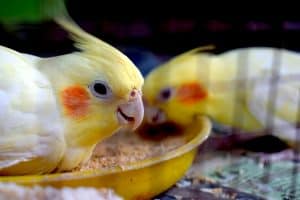
The pelleted diet presents numerous benefits for pet birds, primarily by ensuring a balanced intake of essential nutrients. Here, we explore the advantages such diets offer.
Enhanced Nutrition Absorption
By feeding your birds a pelleted diet, you’re providing a meal that’s scientifically designed for optimal nutrient absorption. These pellets are manufactured to include the right blend of vitamins and minerals, like pantothenic acid and other nutrients, which are crucial for the bird’s health.
Unlike seed diets, which can lead to selective eating habits, pelleted diets prevent your bird from picking only their favorite ingredients, ensuring they receive a complete diet. This comprehensive nutrient intake supports everything from plumage to the gastrointestinal tract, fostering overall health and vitality.
Convenience and Uniformimate
Pelleted diets also stand out for their convenience and uniformity. Each pellet contains a meticulously calculated mix of all the necessary food components, which means you don’t need to worry about preparing a variety of foods to meet your bird’s nutritional needs.
This uniform feeding solution not only saves time but also minimizes waste, as pellets are generally more palatable and leave fewer remnants compared to traditional seed mixes. Additionally, the consistent size and shape of the pellets ensure a tidy feeding area and simplify the monitoring of your bird’s intake, enabling easier adjustments should dietary changes be necessary.
Common Uses of Pelleted Diets
Pelleted diets are integral in providing balanced nutrition across various animal categories. They ensure consistent delivery of essential vitamins and minerals critical for the health of pets and livestock alike.
In Pet Nutrition
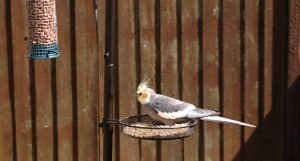
In the realm of pet nutrition, pelleted diets fulfill the nutritional needs of your companion bird by providing a comprehensive diet. These pellets are enriched with proteins, fats, carbohydrates, essential vitamins, and minerals. They include nutritious elements such as whole grains and small amounts of leafy greens, which support healthier digestion and overall robust health in companion birds.
Unlike seed diets that permit selective eating, potentially compromising balanced nutrition, pelleted diets discourage these habits, ensuring that your pet bird receives all essential nutrients during each feeding.
In Livestock Feeding
In the context of livestock, pelleted rations serve as a cornerstone for high-quality, efficient feeding programs. Specifically formulated for species like cattle, sheep, and poultry, these diets support growth, reproduction, and overall health. For instance, pelleted chicken feed typically includes grains, proteins, and essential fats, along with calcium and phosphorous for bone development.
Livestock diets are also densified and compact, which reduces waste and facilitates easier storage and handling. Furthermore, feeding your animals a pelleted diet can aid in tracking nutrient intake and adjusting rations to meet seasonal demands without compromising the quality of the feed.
Potential Drawbacks
While pelleted diets offer numerous benefits, there are potential drawbacks to consider when choosing this feeding option for your pets or livestock.
Nutritional Limitations
Despite their formulation to be nutritionally complete, not all pellets provide optimum nutrition for every type of bird or animal. Some pelleted diets may lack sufficient levels of certain essential nutrients or may not be tailored specifically to the unique dietary needs of different species. For instance, some bird pellets might not adequately cater to the high-energy needs of very active birds or those in breeding seasons.
Furthermore, over-reliance on pellet-only diets can lead to deficiencies in fiber, especially if the pellets do not contain adequate whole grains or other fiber sources. It’s important to ensure that the pellet blend you choose aligns with your pet’s specific nutritional needs and to supplement it with other foods when necessary.
Environmental Concerns
Although pelleted diets are designed to be nutritionally complete, they may not provide optimal nutrition for every type of pet bird. Some pelleted diets might lack certain essential nutrients or fail to meet the specific dietary requirements of different species.
For example, certain bird pellets may not support the high-energy demands of active birds or those in breeding seasons. Additionally, relying solely on pellet diets can lead to fiber deficiencies, particularly if the pellets do not include sufficient whole grains or other fiber sources. It’s crucial to select a pellet blend that meets your pet bird’s unique nutritional needs and to supplement it with a seed diet or other foods when necessary.
Transitioning to Pelleted Diets
Switching your pet from a seed-based diet to a pelleted one can be a significant change, and it’s important to approach the transition carefully. Gradually introducing pellets into your pet’s diet can help avoid gastrointestinal upset and encourage acceptance of the new food.
Start by mixing a small amount of pellets with their current diet and slowly increase the proportion over several weeks. This gradual shift allows your pet to acclimate to the different texture and taste while ensuring they continue to receive balanced nutrition.
Final Thoughts: What is the Pelleted Diet
Choosing the right pelleted diet for your pets or livestock involves balancing several factors. You must ensure the pellets provide the necessary nutrients tailored to your animals’ specific needs while also considering the environmental impact of their production.
While pelleted diets offer convenience and consistency in nutrient delivery, it’s crucial to be aware of their limitations and the potential need for dietary supplements. Always consult with a veterinary or animal nutrition expert to select the best diet option ensuring it caters effectively to the health and well-being of your animals.
Other suggested articles:


